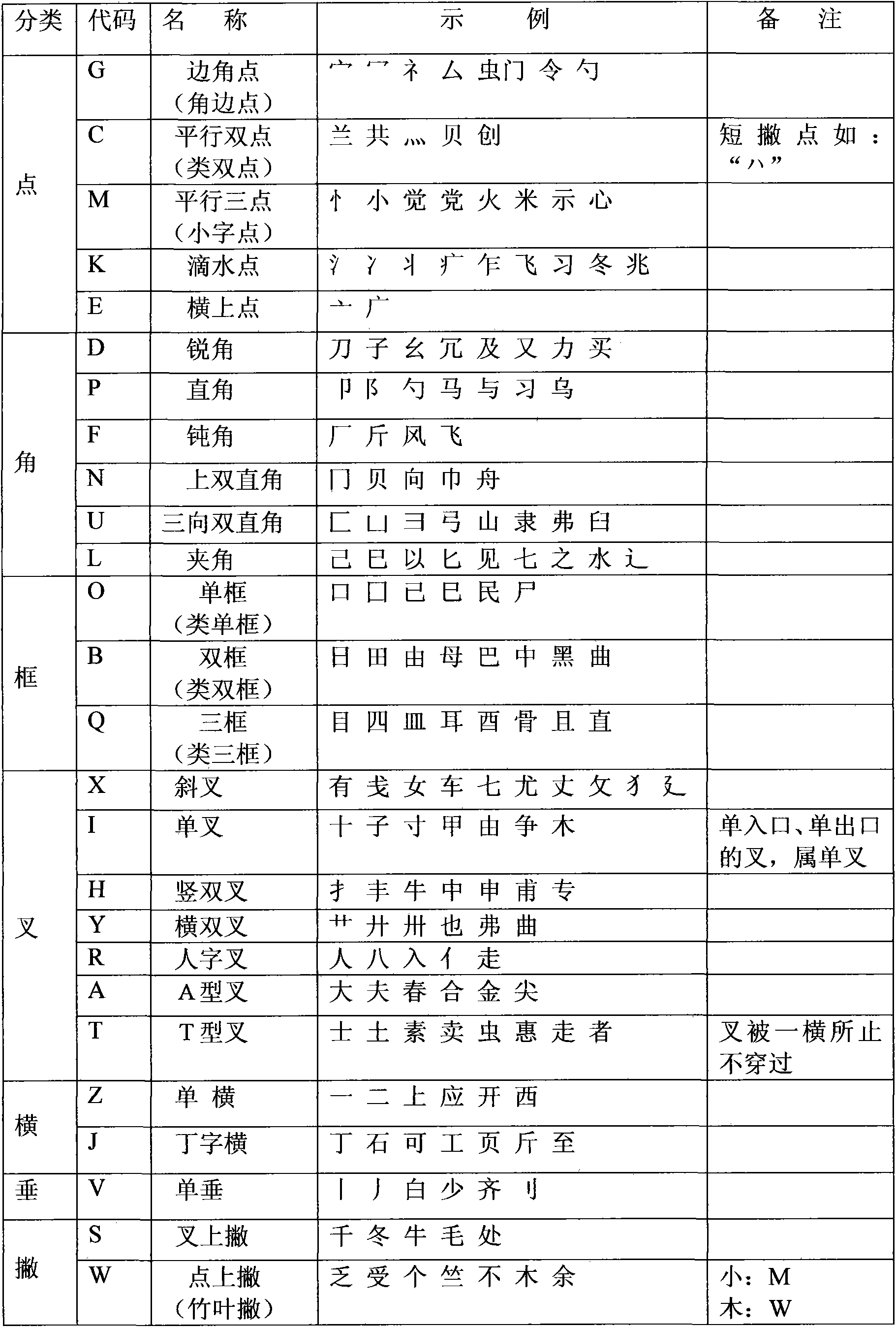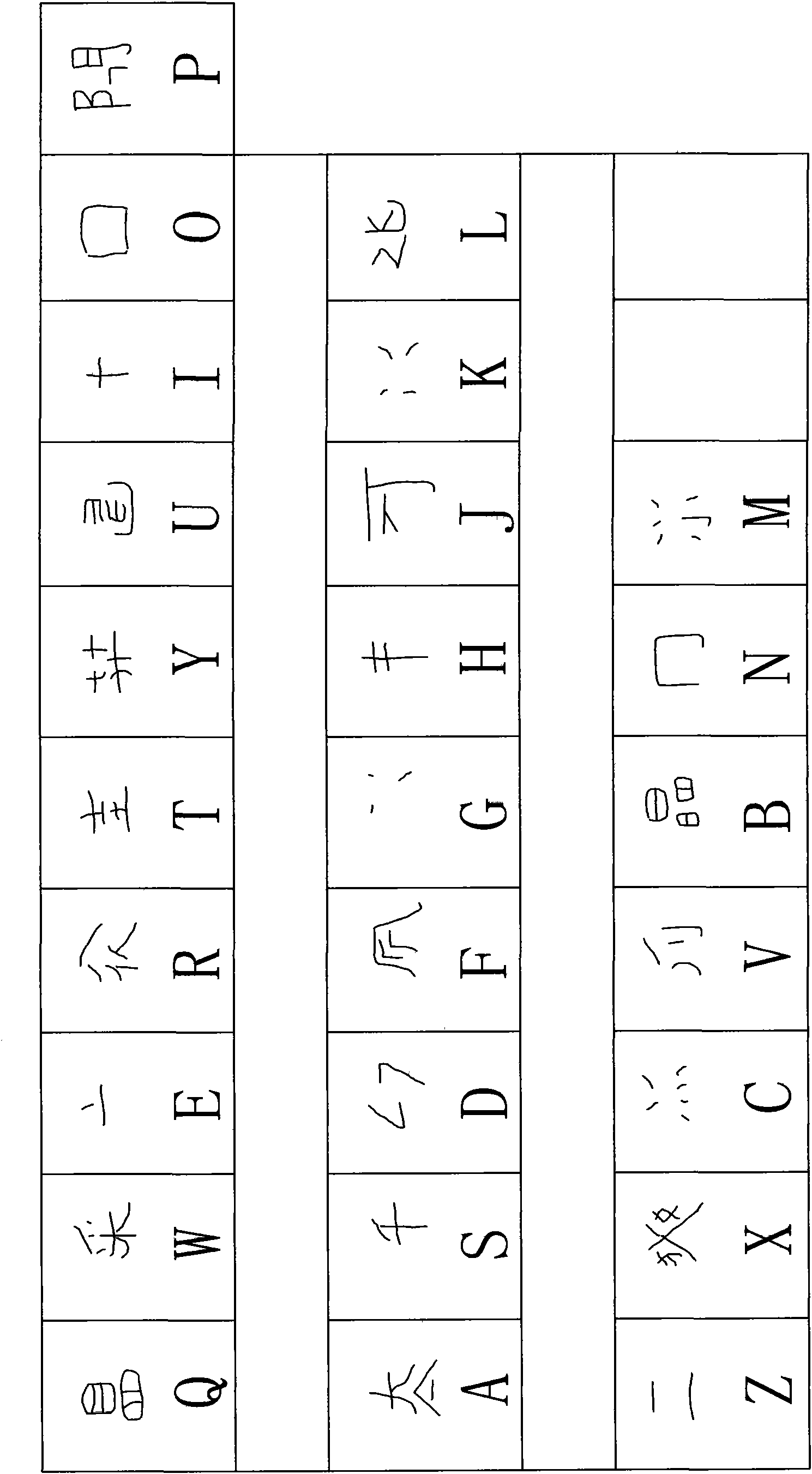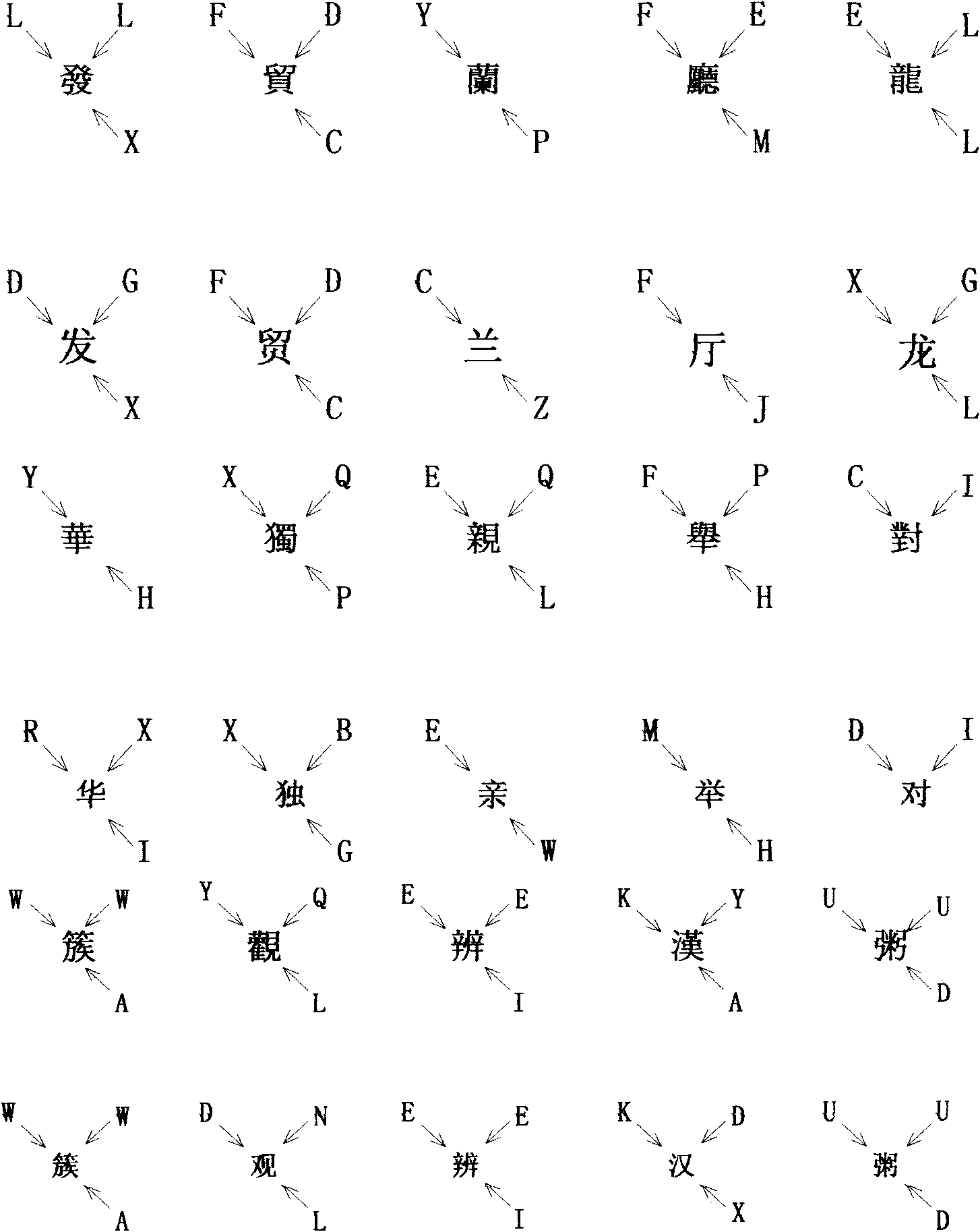Universal Chinese character input method for traditional and simplified Chinese characters by scanning sides and corners
A technology of Chinese character input and corners, applied in the input/output process of data processing, electrical digital data processing, instruments, etc., can solve problems such as difficulty in inputting traditional Chinese character codes, inability to highlight the meaning of images, and complicated computer Chinese character input methods , to achieve the effect of high practical value, simple rules and unique design
- Summary
- Abstract
- Description
- Claims
- Application Information
AI Technical Summary
Problems solved by technology
Method used
Image
Examples
Embodiment Construction
[0086] The present invention is described in detail below in conjunction with accompanying drawing:
[0087] The corner-scanning traditional and simplified universal Chinese character input method described in the present invention is referred to as "scanning code".
[0088] 1. The present invention goes back to the origin in the study of Chinese characters, and finds that the ancestors used image-like objects, far from "writing" one stroke at a time, rather than expressing things by depicting crosses, angles, frames, and dots by crossing lines. Later generations were able to reversely reproduce the original appearance of Chinese characters from the remaining forks, angles, frames, and dots in archaeology. As pictographs, Chinese characters are visual images. Psychological experiments show that the accuracy rate of people's recognition of residual Chinese characters is as high as 90%. In fact, a Chinese character differs from another Chinese character not because of its stro...
PUM
 Login to View More
Login to View More Abstract
Description
Claims
Application Information
 Login to View More
Login to View More - R&D
- Intellectual Property
- Life Sciences
- Materials
- Tech Scout
- Unparalleled Data Quality
- Higher Quality Content
- 60% Fewer Hallucinations
Browse by: Latest US Patents, China's latest patents, Technical Efficacy Thesaurus, Application Domain, Technology Topic, Popular Technical Reports.
© 2025 PatSnap. All rights reserved.Legal|Privacy policy|Modern Slavery Act Transparency Statement|Sitemap|About US| Contact US: help@patsnap.com



